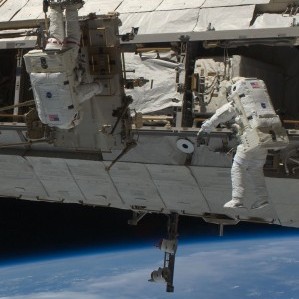What's appealing about durable goods that pretend to be disposable?
Read More »This is your brain on The Force
It's never too early to have "the talk."
Read More »The tyranny of innovation
Larry Page tells us to ask ourselves if the work we do is changing the world. But is change always and everywhere for the better?
Read More »Mystery unplugged tech: is it animal, vegetable, or technological?
Deadly cactus frond? Extinct creature of the deep? Answer after the jump.
Read More »Inoculating our broken infrastructure
University of Newcastle researchers may have come up with a biotechnology answer to the roadway printer I posted about yesterday: bacteria modified to colonize cracks in concrete and fix ruined buildings and crumbling roadways.
Read More »NASA’s Icebridge: imaging the abyss
Researchers with NASA's Icebridge campaign are completing their fourth tour of flights over the polar regions to image ice sheets and glaciers in Antarctica and Greenland. The places they measure and scan are crucial to our understanding of global climate�and forbiddingly hostile as well.
Read More »Backchannel for cephalopods
Squid may be sending each other secret messages by visual means. Whether they use this talent to spam other squid is another question.
Read More »The Wonderful Gallery of Science: Vitruvian Man
The renaissance Vitruvian Man helped to bring about was above all a rehabilitation of the human being as the pinnacle of creation and the expression of a divine ideal; with the discovery of new cultures and ideals that followed, the notion of a single human ideal would be put to the severest test.
Read More »Midday groove: The Books, “I Didn’t Know That”
The electronic collage-music duo The Books give leisure time one more crank of the handle, and it all becomes funny and vaguely unsettling: an 18-hole course deep in the uncanny valley.
Read More »Printing out the orbital infrastructure
3-D printing is going viral. With 3-D fabrication technology at for the desktop, for LEGOs, and for nanoscale materials, it was only a matter of time before the paradigm found its way into space�and corporate science fiction. But this promising technology still has to prove itself in terrestrial infrastructure first.
Read More » Gearfuse Technology, Science, Culture & More
Gearfuse Technology, Science, Culture & More



















